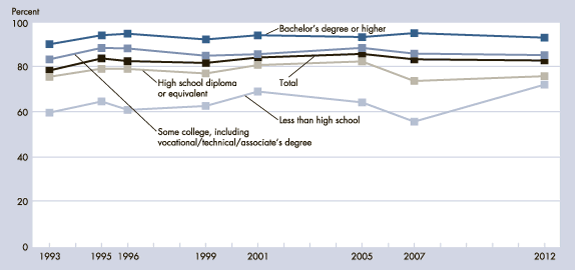Current data shows that families are increasingly reading to their children. In 1993, household surveys conducted by the United States Department of Education, National Center for Educational Statistics, showed that approximately 78 percent of children ages 3-5 were read to by a family member at least 3 times a week.
The most recent data in 2012 shows that the figures rose to approximately 83 percent of households. However, some disparities among reading rates do rise along race/ethnic and socioeconomic lines.
– Non-Hispanic Whites read at higher rates (90 percent) than Asian or Pacific Islander (77 percent), non-Hispanic Blacks (77 percent), and Hispanic (71 percent) in 2012.
– Families with higher incomes also read at higher rates than those living below the poverty level (88 percent to 71 percent).
Indeed, the American Academy of Pediatrics (AAP) is an outspoken advocate for promoting reading to children. In a policy statement made on August 2014, the AAP voiced several concerns regarding the current state of children’s literacy:
-“More than 1 in 3 American children start kindergarten without the language skills they need to learn to read. Reading proficiency by the third grade is the most important predictor of high school graduation and career success.”
-“Approximately two-thirds of children each year in the United States and 80% of those living below the poverty threshold fail to develop reading proficiency by the end of the third grade.”
-“Children from low-income families have fewer literacy resources within the home, are less likely to be read to regularly, and are more likely to experience early childhood adversity and toxic stress at an early age, all resulting in a significant learning disadvantage, even before they have access to early preschool interventions.”
Nonetheless, parents should understand that the significance of reading to their children extends beyond literacy comprehension. In an interview with PBS, Dr. Pamela High of the American Academy of Pediatrics stated:
“…We feel that the power of the experience of reading to children is really seated in the relationship between the parent and the child, that this is the way of building that relationship. And we do know from scores of information that it’s really the parent-child relationship, nurturing relationships between caregivers and children that set a positive life course.”
For Information about how your school can provide a program for Spanish-speaking parents to learn to read with their children, contact www.LatinoLiteracy.com

